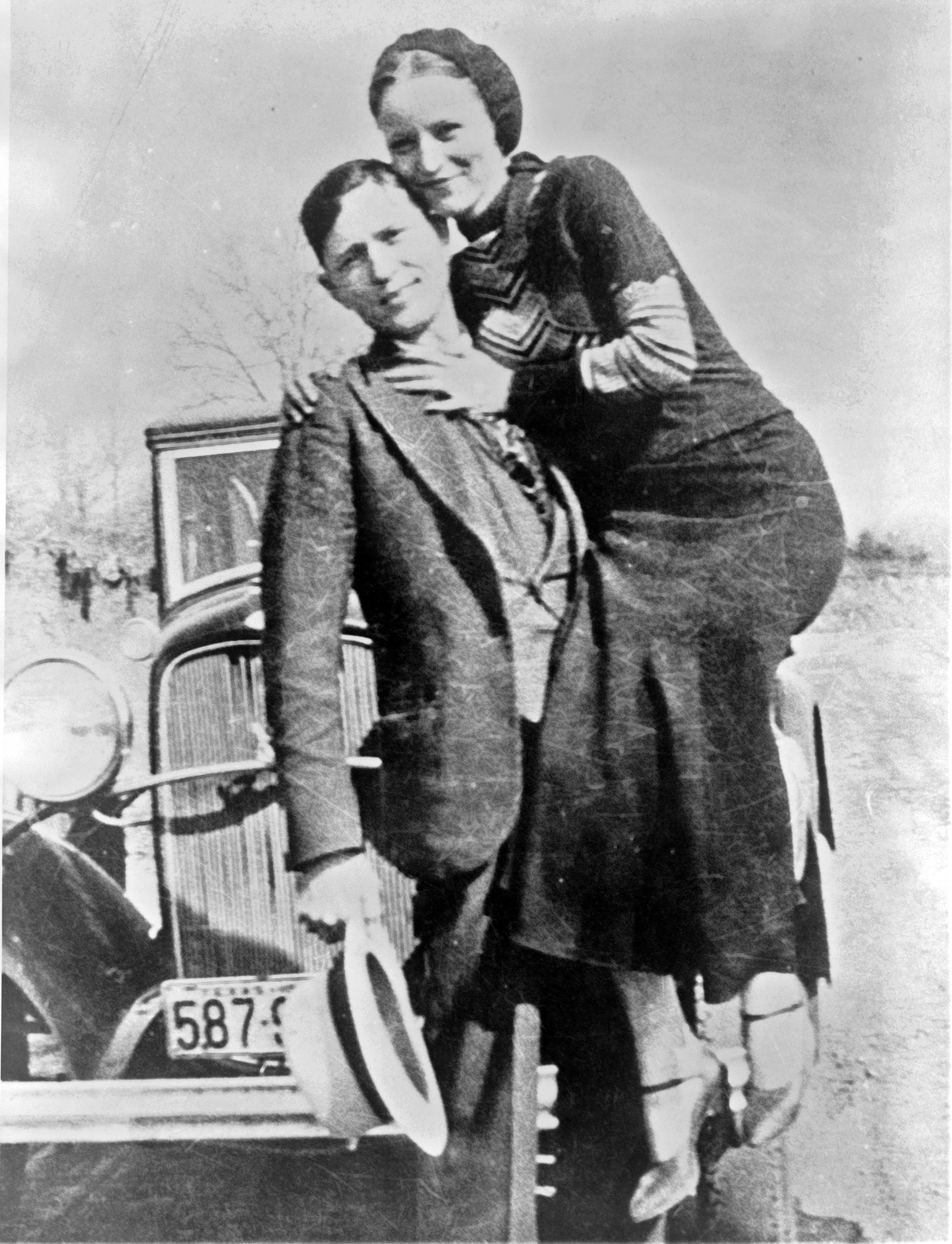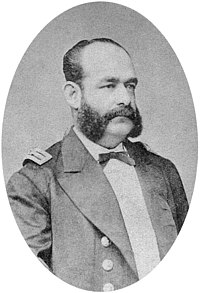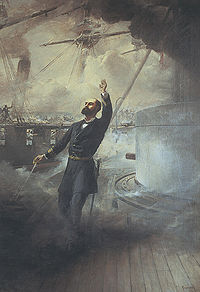Originally referred to as the New York and Brooklyn Bridge and as the East River Bridge, it was dubbed the Brooklyn Bridge in a January 25, 1867 letter to the editor of the Brooklyn Daily Eagle, and formally so named by the city government in 1915. Since its opening, it has become an iconic part of the New York skyline. It was designated a National Historic Landmark in 1964 and a National Historic Civil Engineering Landmark in 1972.
The Brooklyn Bridge was initially designed by German immigrant John Augustus Roebling, who had previously designed and constructed shorter suspension bridges, such as Roebling's Delaware Aqueduct in Lackawaxen, Pennsylvania, Waco Suspension Bridge in Waco, Texas, and the John A. Roebling Suspension Bridge in Cincinnati, Ohio.
While conducting surveys for the bridge project, Roebling sustained a crush injury to his foot when a ferry pinned it against a piling. After amputation of his crushed toes he developed a tetanus infection which left him incapacitated and soon resulted in his death, not long after he had placed his 32-year-old son Washington Roebling in charge of the project.
Washington Roebling also suffered a paralyzing injury as a result of decompression sickness shortly after the beginning of construction on January 3, 1870. This condition, first called "caisson disease" by the project physician Andrew Smith, afflicted many of the workers working within the caissons. After Roebling's debilitating condition left him unable to physically supervise the construction firsthand, his wife Emily Warren Roebling stepped in and provided the critical written link between her husband and the engineers on site. Under her husband's guidance, Emily had studied higher mathematics, the calculations of catenary curves, the strengths of materials, bridge specifications, and the intricacies of cable construction. She spent the next 11 years assisting Washington Roebling helping to supervise the bridge's construction.
When iron probes underneath the caisson found the bedrock to be even deeper than expected, Roebling halted construction due to the increased risk of decompression sickness. He later deemed the aggregate overlying the bedrock 30 feet (9 m) below it to be firm enough to support the tower base, and construction continued.
The Brooklyn Bridge was completed thirteen years later and was opened for use on May 24, 1883. The opening ceremony was attended by several thousand people and many ships were present in the East Bay for the occasion. President Chester A. Arthur and New York Mayor Franklin Edson crossed the bridge to celebratory cannon fire and were greeted by Brooklyn Mayor Seth Low when they reached the Brooklyn-side tower. Arthur shook hands with Washington Roebling at the latter's home, after the ceremony. Roebling was unable to attend the ceremony (and in fact rarely visited the site again), but held a celebratory banquet at his house on the day of the bridge opening. Further festivity included the performance of a band, gunfire from ships, and a fireworks display.
On that first day, a total of 1,800 vehicles and 150,300 people crossed what was then the only land passage between Manhattan and Brooklyn. Emily Warren Roebling was the first to cross the bridge. The bridge's main span over the East River is 1,595 feet 6 inches (486.3 m). The bridge cost $15.5 million to build and approximately 27 people died during its construction.
One week after the opening, on May 30, 1883, a rumor that the Bridge was going to collapse caused a stampede, which crushed and killed at least twelve people. On May 17, 1884, P. T. Barnum helped to squelch doubts about the bridge's stability—while publicizing his famous circus—when one of his most famous attractions, Jumbo, led a parade of 21 elephants over the Brooklyn Bridge.
At the time it opened, and for several years, it was the longest suspension bridge in the world—50% longer than any previously built — and it has become a treasured landmark. Since the 1980s, it has been floodlit at night to highlight its architectural features. The towers are built of limestone, granite, and Rosendale cement. Their architectural style is neo-Gothic, with characteristic pointed arches above the passageways through the stone towers. The paint scheme of the bridge is "Brooklyn Bridge Tan" and "Silver", although it has been argued that the original paint was "Rawlins Red".
 At the time the bridge was built, the aerodynamics of bridge building had not been worked out. Bridges were not tested in wind tunnels until the 1950s—well after the collapse of the original Tacoma Narrows Bridge (Galloping Gertie) in 1940. It is therefore fortunate that the open truss structure supporting the deck is by its nature less subject to aerodynamic problems. Roebling designed a bridge and truss system that was six times as strong as he thought it needed to be. Because of this, the Brooklyn Bridge is still standing when many of the bridges built around the same time have vanished into history and been replaced. This is also in spite of the substitution of inferior quality wire in the cabling supplied by the contractor J. Lloyd Haigh—by the time it was discovered, it was too late to replace the cabling that had already been constructed. Roebling determined that the poorer wire would leave the bridge four rather than six times as strong as necessary, so it was eventually allowed to stand, with the addition of 250 cables. Diagonal cables were installed from the towers to the deck, intended to stiffen the bridge. They turned out to be unnecessary, but were kept for their distinctive beauty.
At the time the bridge was built, the aerodynamics of bridge building had not been worked out. Bridges were not tested in wind tunnels until the 1950s—well after the collapse of the original Tacoma Narrows Bridge (Galloping Gertie) in 1940. It is therefore fortunate that the open truss structure supporting the deck is by its nature less subject to aerodynamic problems. Roebling designed a bridge and truss system that was six times as strong as he thought it needed to be. Because of this, the Brooklyn Bridge is still standing when many of the bridges built around the same time have vanished into history and been replaced. This is also in spite of the substitution of inferior quality wire in the cabling supplied by the contractor J. Lloyd Haigh—by the time it was discovered, it was too late to replace the cabling that had already been constructed. Roebling determined that the poorer wire would leave the bridge four rather than six times as strong as necessary, so it was eventually allowed to stand, with the addition of 250 cables. Diagonal cables were installed from the towers to the deck, intended to stiffen the bridge. They turned out to be unnecessary, but were kept for their distinctive beauty.After the collapse in 2007 of the I-35W highway bridge in the city of Minneapolis, increased public attention has been brought to bear on the condition of bridges across the US, and it has been reported that the Brooklyn Bridge approach ramps received a rating of "poor" at its last inspection. According to a NYC Department of Transportation spokesman, "The poor rating it received does not mean it is unsafe. Poor means there are some components that have to be rehabilitated." A $725 million project to replace the approaches and repaint the bridge was scheduled to begin in 2009.
The construction of the Brooklyn Bridge is detailed in the 1978 book The Great Bridge by David McCullough and Brooklyn Bridge (1981), the first PBS documentary film ever made by Ken Burns. Burns drew heavily on McCullough's book for the film and used him as narrator. It is also described in Seven Wonders of the Industrial World, a BBC docudrama series with accompanying book
El Puente de Brooklyn (conocido inicialmente como "Puente de Nueva York y Brooklyn") une los distritos de Manhattan y de Brooklyn en la ciudad de Nueva York. Fue construido entre 1870 y 1883 y, en el momento de su inauguración era el puente colgante más grande del mundo (mide 1825 metros de largo, y la luz entre pilas es de 486,3 metros, récord de luz hasta que en 1889 se construye el Forth Bridge, con una luz máxima de 521 m. También fue el primero suspendido mediante cables de acero. Desde entonces, se ha convertido en uno de los símbolos más reconocibles de Nueva York.
Es un emblema de la ingeniería del siglo XIX por lo innovador que fue en aquel entonces el uso del acero como material constructivo a gran escala. Está tan bien construido, que actualmente todavía se encuentra en uso. Muchas de las fotografías tipo “skyline” (tipo horizonte) que representan a la ciudad de Nueva York, son tomadas con base en la figura del puente.
El Puente fue diseñado por una firma de ingenieros propiedad de John Augustus Roebling, de Trenton (Nueva Jersey). Roebling y su firma habían construido anteriormente puentes colgantes más pequeños, como el Acueducto de Delaware en Lackawaxen (Pensilvania), el Puente Colgante de Cincinnati (Ohio) o el Puente Colgante de Waco (Texas), que sirvió como prototipo para el diseño final del Puente de Brooklyn.
 Durante el proceso de construcción, Roebling se fracturó gravemente un pie cuando un ferry chocó contra un muelle; pocas semanas más tarde, murió de tétanos a causa de la amputación de los dedos del pie. Su hijo, Washington Roebling, le sucedió en el cargo, pero sufrió una enfermedad causada por su trabajo en los pozos de cimentación, el síndrome de descompresión o "enfermedad de los buzos". La esposa de Washington, Emily Warren Roebling, se convirtió en su ayudante, aprendiendo ingeniería y comunicando las instrucciones de su marido a los ayudantes sobre el terreno. Cuando el puente se abrió al público, ella fue la primera persona en cruzarlo. Su marido en cambio raras veces visitó su obra, ya que vivía en Trenton (Nueva Jersey), durante el proceso de construcción. El puente es de estilo gótico, por los arcos apuntados de las torres; durante muchos años estas fueron las torres más altas de todo el hemisferio occidental.
Durante el proceso de construcción, Roebling se fracturó gravemente un pie cuando un ferry chocó contra un muelle; pocas semanas más tarde, murió de tétanos a causa de la amputación de los dedos del pie. Su hijo, Washington Roebling, le sucedió en el cargo, pero sufrió una enfermedad causada por su trabajo en los pozos de cimentación, el síndrome de descompresión o "enfermedad de los buzos". La esposa de Washington, Emily Warren Roebling, se convirtió en su ayudante, aprendiendo ingeniería y comunicando las instrucciones de su marido a los ayudantes sobre el terreno. Cuando el puente se abrió al público, ella fue la primera persona en cruzarlo. Su marido en cambio raras veces visitó su obra, ya que vivía en Trenton (Nueva Jersey), durante el proceso de construcción. El puente es de estilo gótico, por los arcos apuntados de las torres; durante muchos años estas fueron las torres más altas de todo el hemisferio occidental.La construcción del Puente de Brooklyn comenzó el 3 de enero de 1870, y concluyó trece años más tarde, el 24 de mayo de 1883, cuando fue abierto al público. El primer día lo cruzaron un total de más de 1800 vehículos y 150.000 personas. En su construcción se gastaron 15,1 millones de dólares y murieron 27 personas.
En marzo de 1994 el libanés Rashid Baz abrió fuego sobre una furgoneta ocupada por miembros del grupo ortodoxo judío Chabad-Lubavitch mientras circulaban sobre el Puente de Brooklyn. Una de las víctimas, Ari Halberstam, de 15 años, falleció en el hospital días después. Aparentemente, Baz actuó movido por el deseo de vengar la matanza de Hebrón de 1994, en la que murieron 29 musulmanes. Baz fue condenado por asesinato a 141 años de cárcel; en el año 2000, su caso fue recalificado como "ataque terrorista". La rampa de acceso al Puente desde Manhattan lleva actualmente el nombre de Ari Halberstam.
En 2003, un hombre llamado Iyman Faris fue condenado a veinte años de cárcel por suministrar información a Al-Qaida, después de que se descubriera una trama para hacer caer el puente de Brooklyn cortando sus cables metálicos con sopletes.
Born This Day
Bob Dylan






![Sir Arthur Conan Doyle.
[Credit: Encyclopædia Britannica, Inc.] Sir Arthur Conan Doyle.
[Credit: Encyclopædia Britannica, Inc.]](http://media-3.web.britannica.com/eb-media/00/79800-003-B7B77E66.gif)

















